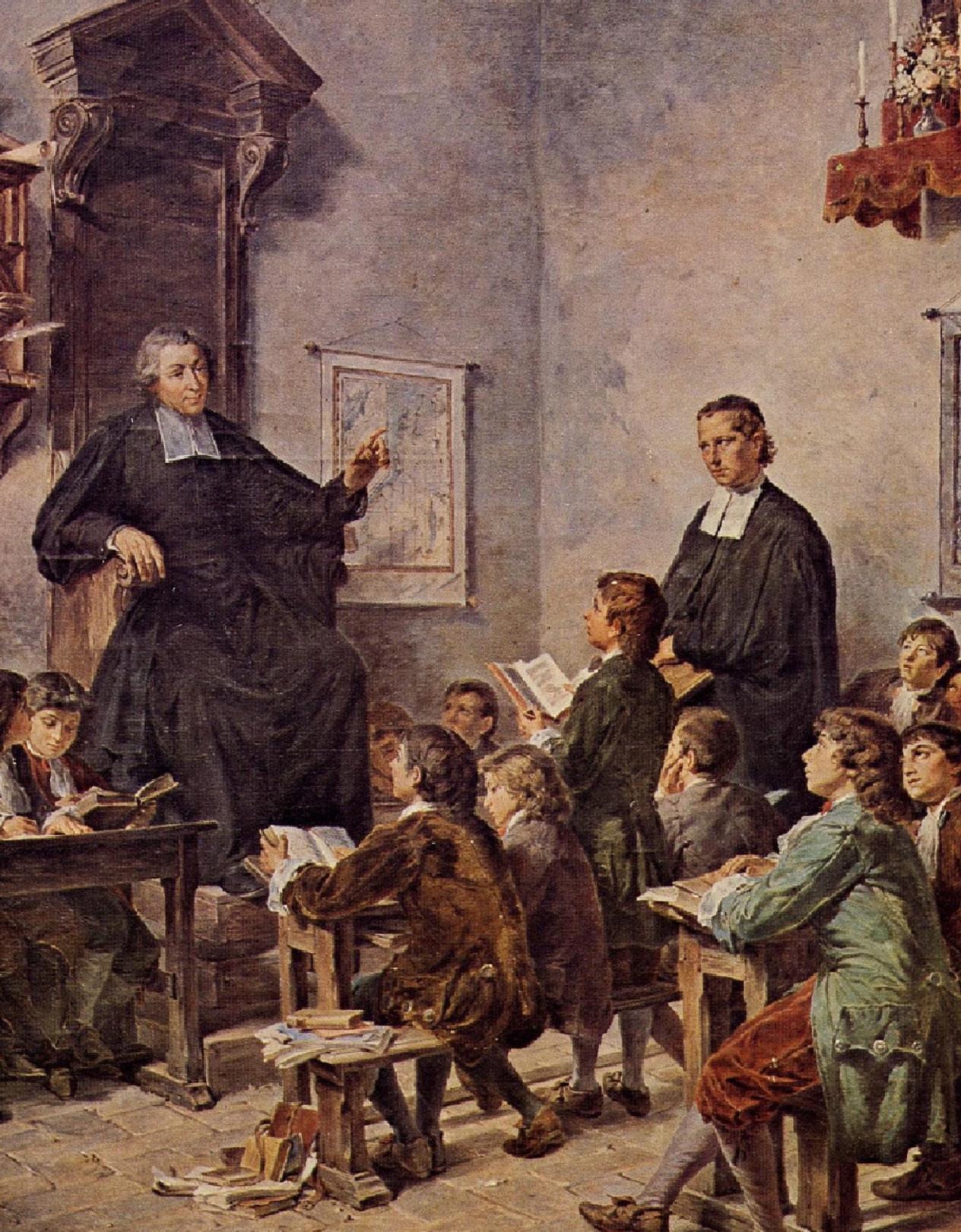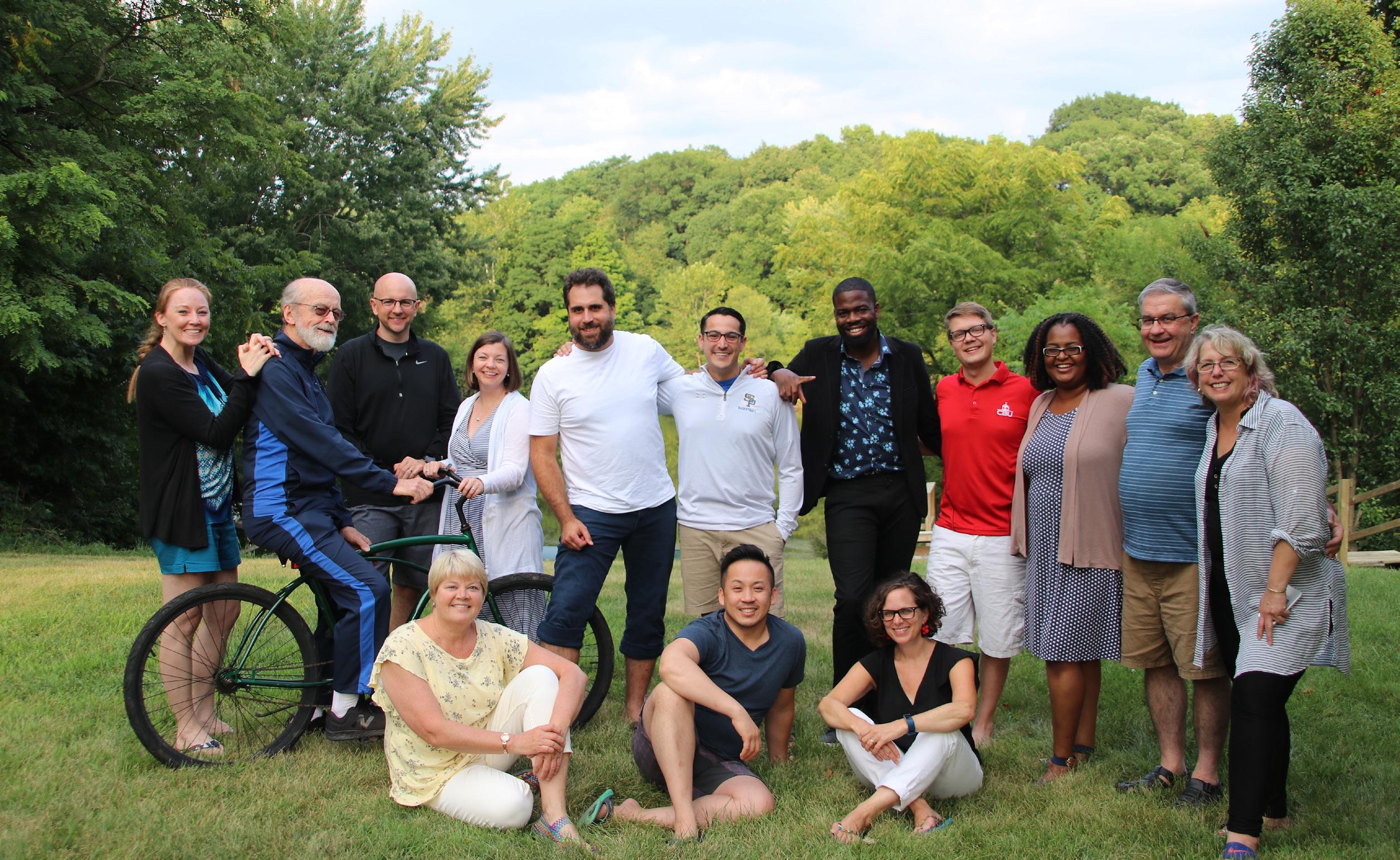
8 minute read
A Transformative Mission and Charism
THREE LASALLIAN EDUCATORS REFLECT ON HOW OUR MINISTRY TO THOSE MOST IN NEED CHANGES THEM AND CHANGES US.
BY BOB CARREJO
Advertisement
In the Lasallian Region of North America (RELAN), this salvific vision of Lasallian ministry finds expression in a variety of educational works.
While all maintain creative fidelity to the mission’s preferential option for the poor, some have adopted models that focus even more explicitly on this Gospel call, giving those involved in those ministries a particularly intense experience of what it means to be Lasallian.
To explore what makes Lasallian education the transformative experience that is has been for so many persons, De La Salle Today spoke with three Lasallian educators who have spent much of their careers ministering in those settings.

Brother Michael Fehrenbach, FSC
Brother Michael Fehrenbach, FSC, is Lasallian formation coordinator for the Midwest District. His tour of duty has run the gamut, from a working-class school in Nebraska to the hard neighborhoods of inner city Chicago. All along, he says, he has been driven by the conviction that, “Kids need the skills to survive in the world. We have to provide a quality academic experience for kids no matter what their capabilities are. Every child can learn.”

Dr. Angel Gonzalez
Dr. Angel Gonzalez is acting principal of De La Salle Academy, a New York City middle school serving academically talented, economically less advantaged students. He also is an alumnus of the school who entered the Lasallian world as many of our students do. “Our family came as immigrants to this country from Colombia. My folks wanted a quality school that would challenge me. I knew De La Salle would be great academically, but what I got out of it—the community, the love, the service—that was something I hadn’t expected.”

Marilyn Paquette
Marilyn Paquette is a former Lasallian Volunteer and principal of De La Salle Academy, a San Miguel middle school in Concord, California, where she arrived after an unexpected invitation to be its first principal. “My personal transformation,” she said, “started when I found myself willing to serve in a role like that of founding principal. I draw inspiration from Saint La Salle’s ‘one commitment led me imperceptibly to another.’”
At first glance, the word “transformative” may seem a standard-issue description for a Catholic educational tradition. However, while all Catholic religious education may have as its goal human transformation, the Lasallian approach to that goal comes from a unique understanding of both religious community and commitment to mission that gives it certain distinctive core characteristics.

(Below left) Marilyn Paquette served as a Lasallian Volunteer (LV) at The San Miguel School of Providence from 1999-2001. From left, Marilyn Paquette, Brother Lawrence Goyette, FSC, LV Trish Reichenberger (Hunter), Brother Michael McLoughlin, FSC, and the late Brother Charles Kitson, FSC. Not pictured: Brother Kevin Junk, FSC.
Courtesy Brother Kevin Junk, FSC
“The fact that Lasallian education is rooted in faith is an absolutely significant piece,” insisted Brother Michael. “Our history of association is about people coalescing together around faith, always for the sake of something else, and the something else is transformative education.”

Dr. Angel Gonzalez graduated from De La Salle Academy in New York in 1999.
Courtesy Gonzalez family
For Gonzalez, his middle school days revealed another key quality. “It was the experience of being surrounded by caring adults,” he recalled. “That transformative aspect was a key … the amount of work that was put in by the whole school to form me.”
Paquette’s Lasallian understanding boils down to yet another central characteristic. “It’s that we choose to work with children on the margins,” she said, “because we are convinced that if a young person receives a quality education, it can provide an opportunity to break the cycle of generational poverty for that young person.”
If these characteristics sound familiar, it is because Lasallians everywhere might recognize them in three iconic words from the Lasallian glossary: faith, community and service. These hallmarks are the instruments for teaching minds and touching hearts, defining the Lasallian ethos and driving the transformative experience for students. And the transformation does not stop with them.
“The colleagues I serve with are transformed by the growth we witness,” Paquette remarked. “When we pause and reflect, we also see the growth in ourselves. You can’t help but be transformed by this work. It calls you to give more than you think you can.”
“Colleagues start to see the difference between a job and a vocation,” Gonzalez added. “They want to be part of the kids’ lives, and they also let the kids into their lives, allowing themselves to be transformed.”
The Region’s ongoing efforts to bring this transformative educational experience to as many young people and adults as possible has taken it and its educational leaders to special and even unexpected places. For example, consider a day in the early 2000s when a group of Brothers in Chicago were approached with an extraordinary invitation.

Brother Michael Fehrenbach, FSC, celebrated his 50th jubilee in 2015.
Courtesy Brother Michael Fehrenbach, FSC
The invitation came from the CEO of Chicago Public Schools, and it was for the Brothers to replicate their San Miguel school model for a public charter school that would be called a Catalyst school. At first, the Brothers declined the invitation to collaborate with the public school system, concerned about not including faith as a basis of the school. However, they would eventually determine that the arrangement could work and, within a few years, help to open several successful Catalyst schools.
For the Brothers, the decision-making process that led to bringing the Lasallian charism to students outside of Lasallian Catholic schools required them to reflect on the charism with a new openness. One insight that they gained from their Catalyst school experience was a recognition of how the foundations of Lasallian education can move it to transcend even its own institutional boundaries.

Catalyst students arrive back to school after a field trip.
Courtesy Brother Michael Fehrenbach, FSC
“I know it’s alternative to what the most recent tradition looks like,” Brother Michael explained about the Catalyst approach, “but you can’t get stuck in the last hundred years. It seemed very consistent with how we understood what Saint John Baptist de La Salle was all about. There was a need that presented itself, and we just thought we could help.”
With centuries of having to face both internal and external changes, one might wonder what accounts for the steady resilience and relevance of the Lasallian tradition. “It’s because we are not focused on teaching subjects; we are focused on teaching students,” Paquette suggested. “With a ‘Lasallian lens,’ there is no doubt we view education as so much more than a student’s academic success.” Gonzalez concurred, saying, “It’s about knowing the kids well enough to maximize their gifts, knowing their social context, and then really drilling down and knowing the kids as the center of what we do.”
To truly appreciate and celebrate Lasallian education, we asked our three Lasallians to ponder the unhappy question of what would be lost if it ever were to end. Their thoughts all pointed in the same direction: to schools as places of salvation.

Marilyn Paquette, second from left, is the founding principal of De La Salle Academy in Concord, California.
Courtesy Brother Lawrence Haley, FSC, De La Salle Academy, Concord
“We’ve always been about the salvation of youth,” reflected Brother Michael. “How do we instill in kids the encounter with Jesus so that they begin to see in themselves what we see in him? That divine spark exists in each of us and, when we believe that, we live differently. It’s about introducing people to their best selves.”
“The biggest loss,” said Gonzalez, “would be around the sense of ‘purposeful rigor,’ of challenging the whole child to all that they can be. We’re not a onesize-fits-all education. We’re about accompanying the child, not just as teachers but as human beings, educating both the mind and the heart, but most importantly the heart.”
Paquette also stressed this intentional saving relationship, concluding, “If the Lasallian tradition were to vanish tomorrow, many young people would go to school without finding a place where they can learn, flourish, be challenged, grow, and go out to serve. I think that is something so greatly needed in our world today … for our students to know they matter, to know they are created by God, that they are unique and have a purpose.”

Dr. Angel Gonzalez, pictured with his eighth grade American Studies students, now teaches at his alma mater.
Courtesy Soobin Lim
Association for the transformative human and Christian education of the young, especially the poor. Words that describe what the world needs done. Words that describe what Lasallians will always find a way to do.
QUESTIONS FOR REFLECTION
1. Is there a quotation from the experiences these educators shared that resonates with your own experience?
2. The religious dimension of community and commitment to mission are identified as core Lasallian characteristics. How are these lived out in your setting? What would you add as core to your experience of what it means to be Lasallian?
3. The article points to a “Lasallian lens” at the heart of how we educate young people, by knowing them personally. How do you relate to this? How are you challenged to better educate not only young people’s minds, but their hearts as well?
Bob Carrejo is director of communications for the District of San Francisco New Orleans.








